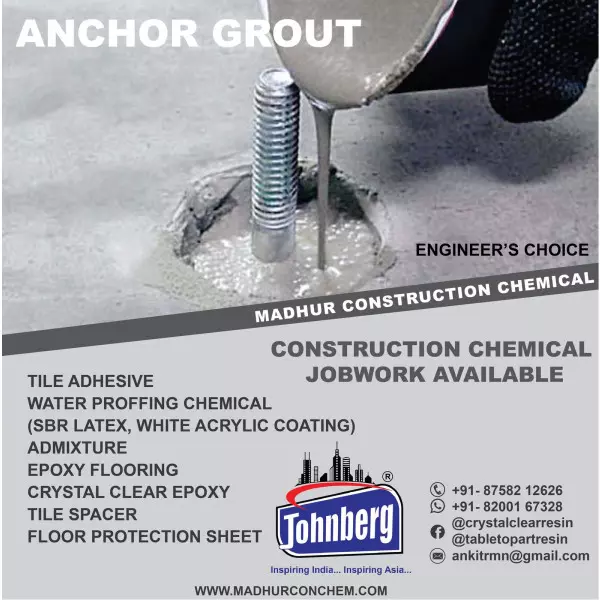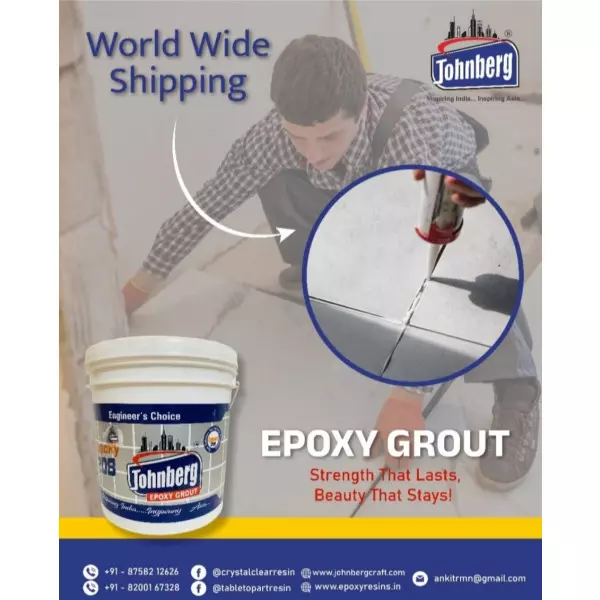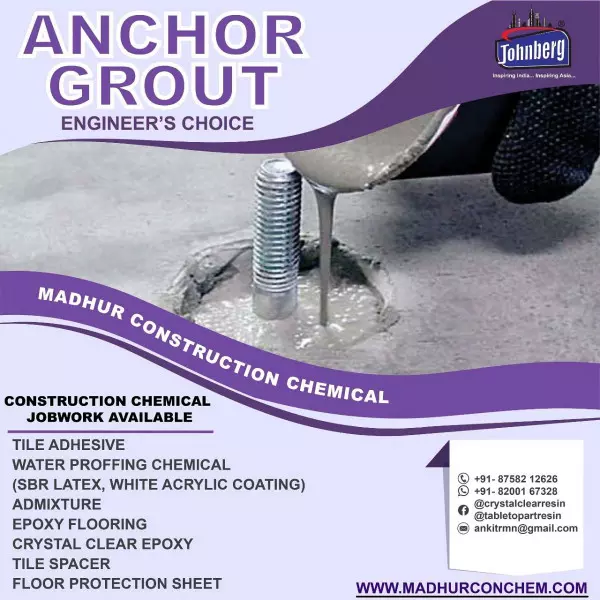- Home
- About Us
- Products
- Resin Furniture
- 3D Epoxy Flooring Service
- Resin Table Top
- Wooden Epoxy Resin Table Top
- Metallic Epoxy Flooring Service
- Conception Chemical Consultants
- Chemical Consultancy For Construction
- Construction Chemical Consultant
- Tile Grout
- Foundation Grout Consultant
- Paver Block Chemical Consultant
- Waterproofing Chemical Consultant
- Epoxy Pigment Consultant
- Heat Reflective Coating
- Water Repellent Coating
- Epoxy Grout
- Chemical Consultant
- Industrial Chemical
- Construction Chemical
- Epoxy Resin
- Epoxy Coating
- Polyester Resin
- Joint Sealants
- Cristal Clear Epoxy Resin And Hardner
- Construction Chemicals
- Polycarboxylate Ether And Liquid
- Solvent Cement
- Tile Protection Sheet
- Water Reducing Superplasticizer
- Epoxy Resin And Hardeners
- Two Component Waterproof Coating
- Epoxy Floor Coatings
- Casting Resin
- Sbr Latex Polymer
- Epoxy Grout Formulations
- Epoxy Resin Tabletops
- Tile Spacers
- Tile Levelling Spacers
- Industrial Night Vision Epoxy Grout
- Sbr Latex
- Johnberg Marble Polishing Liquid
- Acrylic Elastomeric Coating
- Weber Tile Adhesives
- Decorative Arts
- Resinic Crafts
- PU Flexible Tile Adhesive
- Resin Pressed Flowers
- Dry Pressed Flower
- Epoxy Putty
- Resin Furniture
- Services
- Updates
- Gallery
- Contact Us
Anchor Grout Manufacturers In Kerala
Details of Anchor Grout
"Anchor grout" is a specialized type of grout used to secure anchors (bolts, rods, or other embedded items) into concrete or masonry. It provides high strength, durability, and stability for load-bearing connections in construction and engineering applications. Here's a detailed breakdown:
Anchor Grout: Overview
Definition: Anchor grout is a cementitious, epoxy, or polyester-based material used to fill the annular gap between an anchor (like a bolt or rod) and the hole it is placed in. It locks the anchor in place, ensuring it transfers load effectively into the base material.
Types of Anchor Grout
1. Cementitious Anchor Grout
Base: Portland cement + additives
Use: Non-structural to semi-structural applications
Advantages:
Economical
Easy to use
Non-shrinking if formulated properly
Disadvantages:
Lower tensile and bond strength than resin types
Slower curing
2. Epoxy Anchor Grout
Base: Two-component resin (epoxy + hardener)
Use: Structural applications, heavy loads
Advantages:
Very high bond and compressive strength
Excellent chemical resistance
Can be used in damp conditions
Disadvantages:
More expensive
Requires careful mixing and application
3. Polyester or Vinylester Grout
Base: Resin-based (polyester or vinylester)
Use: Medium to high load applications
Advantages:
Fast setting
Good corrosion resistance
Disadvantages:
Lower heat resistance than epoxy
May emit strong odors during curing
Key Properties
Property Description
Compressive Strength Ranges from 30 to 100+ MPa depending on the type
Bond Strength Critical for load transfer between anchor and base
Flowability Important for ease of installation
Shrinkage Should be minimal or compensated
Setting Time Varies (minutes to hours)
Chemical Resistance Especially important in industrial or marine settings
Applications
Anchoring machinery and equipment
Fixing steel structures to concrete
Bridge bearings
Rebar and dowel bar installation
Railings, signposts, and safety barriers
Installation Steps (Typical)
Drill hole to specified depth and diameter.
Clean hole thoroughly (brush + air blow).
Mix grout as per manufacturer’s instructions.
Place anchor (either before or after pouring grout, depending on method).
Pour/inject grout into hole.
Cure as per product data sheet.
Best Practices
Use the right type of grout for the load and environment.
Avoid air pockets while placing grout.
Follow temperature and humidity guidelines during installation.
Allow full curing before applying loads.
Offered Product
Anchor Grout
BrandJohnbergUsage/ApplicationConstructionPackaging Size50 KgColorGrayTypePowderPackaging TypePP BagBrookfield Viscosity1.2Compressive Strength90dShelf Life24 MonthsCountry Of OriginMade In Indiawe Provide Technology To Provide Manufecture Foundation Grout, And Construction Chemical. Established In The Year "2013" we, "Madhur Construction Chemicals" are Engaged In Manufacturing, Exporting And Trading an Excellent Quality Range Of Construction Chemical, Epo... Read moreAnchor Grout India
Anchor Grout Is A Type Of Specialized Grout Used In The Construction And Engineering Industries, Particularly For Anchoring And Securing Structural Elements, Like Bolts Or Rebar, Into A Base Material Such As Concrete. It Is Typically Used For Applications Where High Strength And Durability Are Required, Such As In The Installation Of Heavy Equipment, Structural Supports, Or Bridge Components.The Grout Is Often A Mixture Of Cement, Fine Aggregates, And Other Additives Designed To Improve Its Bo Continue
Anchor Grout Manufacturers In Patna
Anchor Grout Is A Two‑part High‑strength Polyester Resin Based Grout It Is Thixotropic Meaning It Stays In Place In Vertical Or Overhead Positions And Does Not Flow Out Of Holes It Is Widely Used To Anchor Steel Bolts Bars Dowels And Machinery Into Concrete Masonry Or BrickworkMain FeaturesRapid Strength GainHigh Early Compressive And Pull‑out StrengthsResistant To Vibration Corrosion Water Oils And Mild Acids Or AlkalinesCan Be Placed UnderwaterNon Expansive Shrink Free Once C Continue
Anchor Grout Manufacturer In Dehradun
Anchor Grout Is A Cement Based Material Used To Secure Anchors Bolts And Dowels Into Concrete Or Masonry It Is Designed To Flow Easily Into Drilled Holes Or Narrow Spaces Filling Gaps Around The Anchor And Creating A Strong Bond As It Hardens The Material Provides High Strength Durability And Resistance To Vibration And Load Movement Making It Suitable For Structural Industrial And Construction Applications It Helps Transfer Loads Effectively From The Anchor To The Surrounding Base Material Ensu Continue




